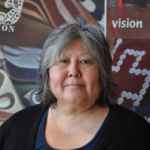By establishing Canada's first land-based Atlantic salmon aquaculture facility with recirculating aquaculture system technology, the ‘Na̲mg̲is First Nation and its diverse partners are proving that environmentally sustainable salmon farming is possible.
‘Na̲mg̲is First Nation: Catalyzing Change for the Future of Salmon
Estimated Reading time

32 Mins
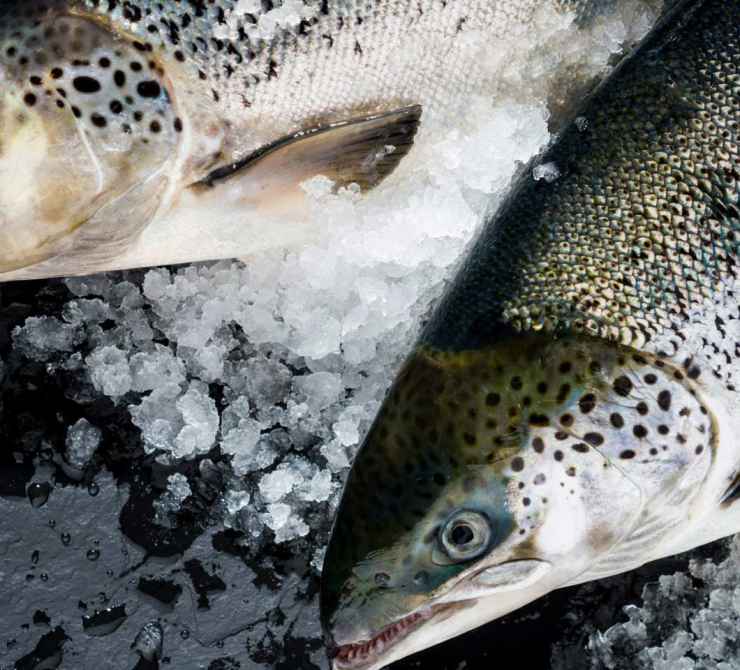
The Kuterra facility is on a ‘Na̲mg̲is First Nation reserve in ‘Na̲mg̲is ancestral lands, which span 220,706 hectares in the Nimpkish and Bonanza watersheds on north east Vancouver Island and the surrounding coastal area.
At A Glance
On northern Vancouver Island a big change is underway. The ‘Na̲mg̲is First Nation, concerned about the health of wild salmon in their traditional territory, set out to establish the first land-based Atlantic salmon aquaculture facility in Canada that uses recirculating aquaculture system (RAS) technology. With support from diverse partners including conservation organizations, industry, and government, the ‘Na̲mg̲is are helping to catalyze change by proving that environmentally sustainable salmon farming is possible.
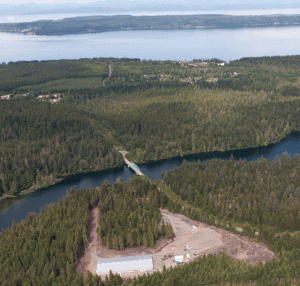
Enterprising for the Environment
The ancestral lands and waters of the ‘Namgis First Nation span the Nimpkish River watershed on northeastern Vancouver Island and associated ocean habitats. In this diverse coastal area, aquatic species such as salmon have flourished and have supported the cultural, economic, and social well-being of the ‘Namgis people for millennia.
More recently, conditions that support the health of wild species have been changing. Wild salmon stocks are being depleted under pressure from industries, climate change, and the impacts of open-net aquaculture in the ocean. These increasing threats to wild salmon in ‘Namgis ancestral lands led the Nation to explore solutions to protect wild fish with the goal of motivating the salmon aquaculture industry to evolve away from damaging aquaculture practices.
“The ‘Namgis First Nation takes our obligation as stewards of the world around us very seriously,” explains Debra Hanuse, Chief Councillor of the ‘Namgis Nation. “Care for our lands and waters are intertwined with care for future generations. Wild Pacific salmon have sustained us for thousands of years, are at the heart of our culture, and the heart of what we pass on to our children.”
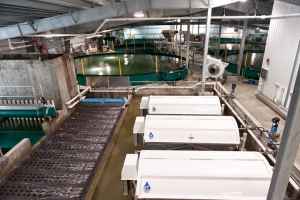
With this mandate, in 2010 the ‘Namgis signed a memorandum of understanding with the Save Our Salmon Marine Conservation Foundation (SOS), now part of Watershed Watch Salmon Society, to find ways to mitigate the impact of open-net finfish aquaculture on local wild Pacific salmon. ‘Namgis and SOS decided to explore the feasibility of a land-based closed-containment salmon farm using recirculating aquaculture system technology (RAS) to see if it could work to raise healthy, antibiotic-free, pesticide-free Atlantic salmon commercially with no harmful impact on the environment.
“We learned that using RAS to grow Atlantic salmon for foodfish had been researched and trialed by the Freshwater Institute in the US,” explains Eric Hobson, founder of SOS and now a director of Watershed Watch. “The Freshwater Institute provided essential information on how to apply RAS to adult Atlantic salmon. But we needed to test the technology, the biology, and the economics of on-land fish farming at a more commercial scale to assess whether it could work here on the BC Coast.”
Garry Ullstrom, former Senior Financial Officer of the ‘Namgis First Nation and now CEO of Kuterra, acknowledges: “It was strange, of course, for the ‘Namgis to think about becoming Atlantic salmon farmers. But the key motivation for the ‘Namgis was that this might prove to be a good way to protect wild Pacific salmon, which are so important to the First Nation.”
The idea for Kuterra—Canada’s first on-land commercial-scale Atlantic salmon farm—was spawned.
It was strange, of course, for the ‘Namgis to think about becoming Atlantic salmon farmers. But the key motivation for the ‘Namgis was that this might prove to be a good way to protect wild Pacific salmon, which are so important to the First Nation.
Tackling Operationalization and Growing Pains
With the idea and key players in place, the next step was to line up the financing. The innovative business would require land and significant financial capital to build a state-of-the-art RAS facility and get it operational. It was a process that would take tenacity, patience, and a remarkable level of collaboration among many dedicated supporters.
The initial plan was for SOS to raise all of the funds required to build the facility and get it running, with ‘Namgis providing the land. “It was originally conceived so that there would be no risk and no cost to the ‘Namgis,” confirms Ullstrom.
Kuterra is now wholly owned by the ‘Namgis First Nation, and governed by a professional board. It was founded as an open-source model to assess and report on the financial, biological, and technical aspects of the operation and feasibility of growing Atlantic salmon using RAS. This public reporting is intended to provide information for others who are considering this more environmentally sustainable farming model, to speed innovation and development of the industry.
Tides Canada provided major funding from philanthropic sources. Funding also came from Sustainable Development Technology Canada, the Department of Fisheries and Oceans, and other sources. Ecotrust conducted an initial feasibility study. Advice and technical support came from Tides Canada, the Freshwater Institute, Dr. Andrew Wright, and others. As the project progressed, however, fundraising for the project proved to be more complex than first anticipated.

“The original plan was to have various potential funders contribute to one pooled source of capital to fund the project,” explains Catherine Emrick, Senior Associate of Aquaculture Innovation at Tides Canada. This would cut down on the administrative and reporting processes. “But it didn’t work out that way because many of the funding sources were established programs with different criteria and sets of reporting rules,” says Emrick.
A compromise approach was used instead: “Although the funding was provided directly from several different resources, we worked with the funders to streamline their reporting requirements in a manageable way,” explains Emrick.

Construction also proved to be a complex challenge that involved several community decisions. The initial expectation was that ‘Namgis would not bear any cost for the project. This changed at the design stage, when members were presented several options and approved a higher-cost option that offered maximum flexibility for future operations and expansion. To achieve this option, the Nation invested $1 million into construction.
Once construction started, additional costs rose beyond initial funding levels, and this presented ‘Namgis with another tough decision. They chose to provide loan guarantees to finance the completion of construction.
Ullstrom says: “‘Namgis wanted to retain 100% ownership, so that meant their options were either having a smaller-scale facility that might compromise ongoing profitability, walking away from a half-built facility, or increasing their equity stake in it to carry through to the end. This was very challenging because the basis on which the community had originally supported the concept was that it would be at no cost. Now, to retain full ownership, they would have to take on debt to back the project. That was a difficult decision to make.”
‘Namgis decided to go ahead and complete the project for the same compelling reasons they had approved it in the first place: helping the wild salmon by proving there was a better way to grow Atlantic salmon.
In early April 2017, ‘Namgis First Nation members voted on a process that, once completed, would allow additional third-party investment in the facility through creation of a long-term lease on reserve land. The vote result was overwhelmingly to support the lease process and search for potential investors or buyers to provide new capital for improvements identified as necessary to the business.
Sharing Best Practices and Lessons Learned
In its first three years of operations, Kuterra raised more than one million pounds of Atlantic salmon and brought them to market, forged an innovative distribution and marketing partnership with Albion Farms and Fisheries, and won accolades for its products – and it openly shared what it learned along the way.
“Our founding mandate was to be open-source and catalyze change in the industry,” explains Ullstrom. This means that Kuterra has provided reports on the nitty-gritty on how to do this business – the challenges, the required infrastructure for power and water, operational details, and information on smolts and fish performance in varied conditions. All of the reports were reviewed by an external multi-stakeholder technical advisory committee.
Our founding mandate was to be open-source and catalyze change in the industry.
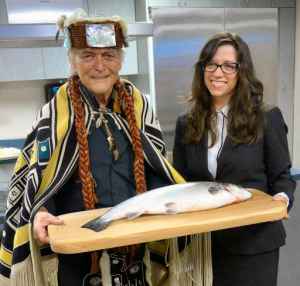
The facility’s transparency was part of its funder obligations, and Kuterra has provided the public with reports on the performance of its operations and paved the way for other facilities to reduce their risk and maximize the likelihood of success. It’s been an important push for the industry’s evolution. “There’s already been so much growth and development in on-land aquaculture since Kuterra started, and our contribution is definitely a part of that,” Ullstrom adds.
Mike Cunning, President of Miracle Springs, a land-based trout farming facility, agrees. “Kuterra provides an invaluable benchmark for business plan development and execution. We now have actual metrics on capital and operating costs, along with detailed data, all of which is paramount for investment decisions. A significant network has grown around the project that provides additional input and support for new investment.”
Kuterra has also shared its experience with First Nations through workshops, presentations, and tours of the facility. “There’s been a full spectrum of interest from First Nations and we are happy to support those who are interested in this technology by sharing our experience,” says Ullstrom.
As Kuterra evolves, and with its obligations to funders now ended, Kuterra’s role as a vehicle for industry development has shifted. Kuterra is now tightly focused on achieving its economic and financial goals. The formal industry-development role that they have had until now will continue through partnerships with other producers and researchers around the world.
There’s been a full spectrum of interest from First Nations and we are happy to support those who are interested in this technology by sharing our experience.
Building an Optimized Business Model
It’s been an equally important time on the business side of Kuterra’s operations. Kuterra has established a premium brand that commands a premium price, fostered supportive industry partnerships, and gained wide recognition—and demand—for its products.
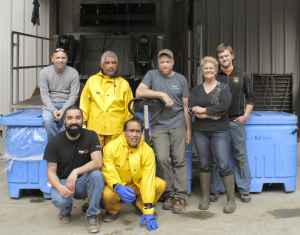
“In 2016, we expanded our tank capacity, which allowed us to move to weekly harvests from bi-weekly,” reports Ullstrom. The facility was able to capitalize on an opportunity for new tanks from DC International, made possible by the Build in Canada Innovation Program of Public Works and Government Services Canada.
“The addition of new harvest tanks has two important benefits for Kuterra,” says Ullstrom. “We heard loud and clear that many customers in the North American food-service industry want fresh weekly deliveries, and now we can meet that need. Within the farm, we’ve been facing some limitations in the scale of our operations, and now we have one more tank to add to our capacity for raising Kuterra salmon to market size.”
The company’s brand, KUTERRA Land Raised™ Atlantic salmon, can be found in grocery stores, such as Safeway in Western Canada, and in select fine-dining restaurants. This wide demand and distribution has been carefully managed by Kuterra’s distribution and marketing partner Albion Farms & Fisheries.
“It was clear to us that ‘Namgis had consciously chosen to surround themselves with the right experts and infrastructure and were determined to go about this concept the right way,” explains Guy Dean, Vice President and Chief Sustainability Officer at Albion. “We saw that they were a very forward-thinking group, and they had a proven track record of industry investment that gave us confidence as well in partnering with them. It’s very challenging creating a new market for a new product and Kuterra has been an excellent partner with us in doing the work needed to develop that. That’s really starting to pay off now.”
As part of Kuterra’s obligations to its funders, the company conducted an extensive analysis of the business and compared four years of operations to initial forecasts. This identified four key areas where the business can be strengthened. By early 2017 close to a dozen groups had expressed interest in investing in Kuterra, and Kuterra was starting the process of identifying the most promising partners.
We heard loud and clear that many customers in the North American food-service industry want fresh weekly deliveries, and now we can meet that need.
Key Challenges and Successes
The staff at Kuterra advises those contemplating the development of a RAS facility to think carefully about the technical capacity and financial capital available to support the project. “Land-based fish farming is a complicated, complex and capital-intensive business,” explains Ullstrom. “But I do believe it provides an opportunity for some First Nations, particularly those with existing processing facilities. There’s risk involved, of course, because it is still an industry in development. People can learn from our experience.”
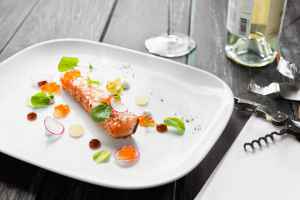
As part of Kuterra’s industry-development mandate, Kuterra has proven the technological and biological feasibility of using RAS to grow Atlantic salmon on land. It also has identified the parameters essential to economic feasibility: rates of growth and maturation, smolt supply and scale of operations. Kuterra has made small improvements in three of these four areas, and as of April 2017 was seeking investment to resolve them more completely.
“Our findings identify actions needed to optimize technological and biological performance, such as minimizing early maturation and improving growth rate. Evidence indicates that increasing salinity through access to sea water resolves growth and maturation questions,” Ullstrom says. “It’s also important to have a hatchery associated with the operation, to guarantee a timely, suitable smolt supply.” Kuterra does not have its own hatchery, and over several years of operations, this has proven to be a bigger business hurdle than projected.
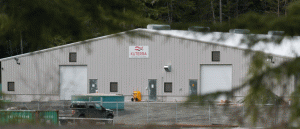
Underpinning all these findings is the identification of the minimum scale of operations needed for economic feasibility. “Our analysis supports the experience of other similar start-up operations around the world,” concludes Ullstrom. “Given current capital and operational requirements, a 3,000-metric tonne facility is best positioned to achieve a sustainable, comfortable business margin for growing Atlantic salmon.”
This scale of operations may be a challenge for some businesses due to the capital cost. An alternative is to consider raising species other than Atlantic salmon, which do not require large volumes of production in order to earn a profit, such as Arctic char, sturgeon, steelhead, or tilapia.
We have debunked a lot of myths about this technology. One of them is that it would take too much energy. We’ve actually proven that it’s very energy-efficient.
Environmental
Outcomes
Kuterra was developed to test land-based closed-containment Atlantic salmon farming as an alternative to open-net ocean-based salmon farming, which has impacts on ocean ecosystems. The Kuterra facility cleans and recirculates its water, with more than 99% of the water reused on each cycle. The solid waste from fish is composted and sold as fertilizer, and the discharged water is suitable for use in aquaponics operations. No antibiotics are used in growing the salmon.
The first five years of Kuterra’s development, from the start of construction to the early years of production, were monitored for environmental impacts. The Pacific Salmon Foundation oversaw the Independent Environmental Monitoring Program (IEMP) that was based on weekly or bi-weekly data gathering to allow for analysis of the environmental aspects of Kuterra operations. The IEMP final report found that Kuterra operations were environmentally benign.
While Atlantic salmon grown in net-pens is red-listed by sustainable seafood programs Seafood Watch from the Monterey Bay Aquarium, Canada’s SeaChoice and Vancouver Aquarium’s Ocean Wise for its impact on wild salmon and the use of pesticides and antibiotics in production, Kuterra land-raised salmon has Seafood Watch’s “Best Choice” sustainability rating and is certified sustainable by SeaChoice and Ocean Wise.
Learn more about Research.
Social Outcomes
Kuterra operations have created four full-time equivalent permanent jobs on northern Vancouver Island. Two permanent part-time jobs are held by ‘Namgis First Nation members, and Kuterra operations support many spinoff jobs locally and regionally in processing and transportation.
Learn more about Job Creation.
Economic Outcomes
The construction, start-up, operating, and capital costs of Kuterra have injected millions of dollars into the local and regional economy of Vancouver Island and metro Vancouver. Goods and services have been provided by companies in Port Hardy, Port McNeill, Nanaimo, Richmond, and other local companies, providing over $10 million in spinoff economic benefit in the region.
The project has also provided important data and metrics on the economic feasibility of development of RAS facilities, spurring innovation in the industry. “We have debunked a lot of myths about this technology,” says Ullstrom. “One of them is that it would take too much energy—we’ve actually proven that it’s very energy-efficient.”
Learn more about Diversification.
Cultural Outcomes
The KUTERRA™ brand showcases the culture of the ‘Na̲mg̲is First Nation. In particular, the name “KUTERRA” uses the ‘Kwak’wala word “kutala”, which means “salmon”, combined with the Latin word “terra”, meaning land—to give “KUTERRA”, meaning “salmon from the land.”
The project affirms First Nations’ leadership in efforts to protect wild salmon—a culturally significant resource to the ‘Namgis and most other BC First Nations. The business strives to demonstrate a financially and environmentally sustainable alternative to the open net-pen salmon farming activities which many Nations oppose. By demonstrating a financially and ecologically sustainable approach to Atlantic salmon farming on land, ‘Namgis’ long-term vision is to remove open net-pen salmon farming activities from Pacific ocean waters.
Learn more about Traditional Languages.
In 2015, Coast Economic Development Society approved $177,316 toward the start-up and commercialization of Kuterra.
Helpful Organizations
- Save Our Salmon Marine Conservation Foundation, now part of Watershed Watch Salmon Society
- Tides Canada
- Sustainable Development Technology Canada
- Fisheries and Oceans Canada
- Build in Canada Innovation Program
- Indigenous and Northern Affairs Canada
- Albion Farms & Fisheries
- Freshwater Institute
- Pacific Salmon Foundation
- SeaChoice
- Ocean Wise
- Monterey Bay Aquarium Seafood Watch
- InSEAS Research, UBC
- BC Hydro
Online Resources
- MakeWay
Salmon Aquaculture Innovation Fund Page - Kuterra
Industry Development Page - 'Na̲mg̲is Land-Based Atlantic Salmon Recirculating Aquaculture System Pilot Project Update
Re: Production for the period October 1, 2015 to June 30, 2016 - 'Na̲mg̲is Land-Based Atlantic Salmon Recirculating Aquaculture System Pilot Project Update
Re: Completion of Cohort #4 July 1, 2015 to September 30, 2015 - 'Na̲mg̲is Land‐Based Atlantic Salmon Recirculating Aquaculture System Pilot Project Milestone #7 Performance Metrics
Report March 1, 2013 ‐ June 30, 2015 - 'Na̲mg̲is /Kuterra Closed-Containment Project: Independent Environmental Monitor Final Report for Tides Canada
Pacific Salmon Foundation for Tides Canada, August 2015 - Information Sharing For Developers of Recirculating Aquaculture Systems (RAS) Development Costs of Two Operating Facilities Employing RAS
March 2013 - Raising Salmon on Land Makes Business and Environmental Sense
Tides Canada, January 2016 - Salmon Raised on Land Could Be the Future of Seafood
Munchies Vice, October 2016 - Ocean-Based Salmon Farms Targeted in BC MP's Private Member's Bill
Vancouver Sun, October 2016 - Canadian Land-Based Salmon Starts Weekly Harvest
Undercurrent News, September 2016 - Calgary Zoo’s Culinary Chops Highlight Sustainability and Conservation
CBC Calgary, August 5, 2016 - The Salmon Farm of the Future?
The National, CBC Television, December 2015 - Is Salmon Raised on Land the Future of Seafood?
National Geographic, June 2015 - Tackling a Sustainable Industry for Atlantic Salmon Farming
The Globe and Mail, April 2015 - In The Future We Might Farm Fish on Land Instead Of In The Sea
Oregon Public Broadcasting, November 2017
Published On April 28, 2017 | Edited On October 31, 2022
